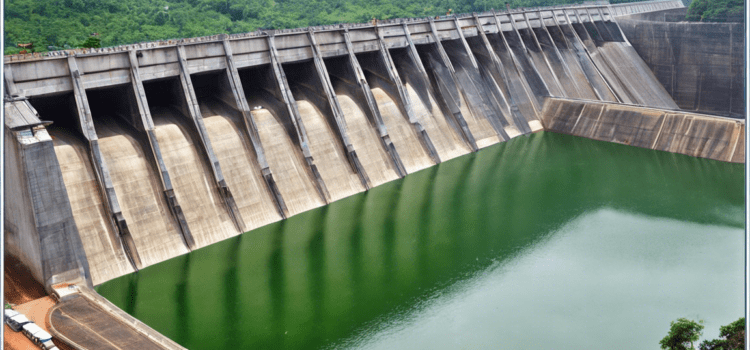Introduction
History of the Krishnarajasagara Dam
The Krishnarajasagara Dam, also known as the KRS Dam, is a significant dam in India located across the Cauvery River in Mandya District of Karnataka. The construction of the dam began in 1911 and was completed in 1931, named after Krishnaraja Wodeyar IV, the then ruler of the Kingdom of Mysore. The primary purpose of building the dam was to provide water for irrigation to the nearby areas, especially for the districts of Mandya and Mysore.
Key Features of the Krishnarajasagara Dam
* Reservoir Capacity: The dam has a capacity of storing over 100 billion cubic feet of water, making it one of the largest reservoirs in South India.
* Hydroelectric Power: Apart from irrigation, the dam also generates hydroelectric power with a capacity of 42 MW, aiding in the overall development of the region.
* Brindavan Gardens: The dam is renowned for the picturesque Brindavan Gardens built near the dam, attracting tourists from far and wide.
* Architectural Marvel: The architectural design of the dam, featuring intricate stone masonry and intricate carvings, is a sight to behold.
Impact of the Krishnarajasagara Dam
* Agricultural Prosperity: The primary impact of the KRS Dam has been on agriculture, providing much-needed water for irrigation to the fertile lands of Mandya and Mysore districts, leading to increased agricultural productivity.
* Hydroelectric Power Generation: The dam’s power generation has not only contributed to the region’s electricity needs but has also facilitated industrial growth in the vicinity.
* Tourism: The picturesque setting of the dam and the adjacent Brindavan Gardens have boosted tourism in the region, further aiding in the local economy.
* Water Supply: Besides irrigation, the dam also provides drinking water supply to the nearby towns and cities, serving as a crucial water source.
Future Prospects and Sustainability
As we move towards a more sustainable future, the Krishnarajasagara Dam is also evolving to meet modern challenges. Initiatives such as water conservation, watershed management, and eco-friendly tourism practices are being implemented to ensure the dam’s longevity and ecological balance.
Frequently Asked Questions (FAQs)
1. What is the purpose of the Krishnarajasagara Dam?
The primary purpose of the Krishnarajasagara Dam is to provide water for irrigation to the nearby agricultural lands, generate hydroelectric power, and supply drinking water to the surrounding areas.
2. How has the dam impacted agriculture in the region?
The dam has had a significant positive impact on agriculture by providing a reliable source of water for irrigation, leading to increased crop yields and overall agricultural prosperity in the Mandya and Mysore districts.
3. What are the tourist attractions near the Krishnarajasagara Dam?
One of the main tourist attractions near the KRS Dam is the Brindavan Gardens, known for its musical fountain and beautifully landscaped gardens. Visitors can also enjoy boating and recreational activities in the dam’s reservoir.
4. Is the Krishnarajasagara Dam eco-friendly?
Efforts are being made to make the dam more sustainable and eco-friendly through water conservation measures, watershed management, and promoting responsible tourism practices to preserve the surrounding ecosystem.
5. How does the Krishnarajasagara Dam contribute to power generation?
The dam has a hydroelectric power station with a capacity of 42 MW, generating electricity to meet the region’s power needs and supporting industrial growth in the area.
6. What are the historical significance and architectural features of the dam?
The Krishnarajasagara Dam holds historical significance as a testament to the engineering prowess of its time and is admired for its intricate stone masonry and architectural design, making it a must-visit landmark in Karnataka.
Conclusion
The Krishnarajasagara Dam stands as a beacon of human ingenuity and engineering excellence, providing vital resources for agriculture, power generation, and tourism while preserving the region’s ecological balance. As we look towards a sustainable future, the dam continues to play a crucial role in meeting the evolving needs of the society and the environment.

